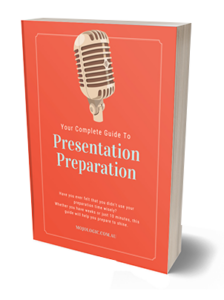“A wealth of information creates a poverty of attention”
–Hebert Simon (winner of the Nobel Prize for Economics, 1978)
We are living in the information age. You can no longer claim an advantage because of your specialist knowledge. Chances are, the people you are trying to persuade – your colleagues, customers or employees – have access to the same information that you do.
Smartphones have become our oracles and our boredom-busters. When our attention wanes we swipe, click, text or surf.
Our ability to maintain focussed attention has steadily diminished. The problem identified by Herbert Simon is so much worse now. The average length of a sound bite by a US presidential candidate in 1968 was 42.3 seconds, in 1988 it was 9.8 seconds and in 2014 it is about 7 seconds. The aversion to complexity is not unique to the United States, nor is it limited to the political arena.
The Problem of Information Overload
Over the past 30+ years, social science researchers have made us uber aware of the fact that our audience, teams, and customers are often on ‘auto-pilot’. It seems that most of us are already overwhelmed, much of the time. When on auto-pilot we respond to cues for how to behave, without really thinking at all.
But, what about when you are the one seeking to provoke change?
How can you persuade your team, clients or audience to think differently if they resist thinking at all?
Have you ever found yourself in the situation where you know your message is falling on deaf ears?
Eyes are glazed. Or worse, rolling back in their respective heads.
Information overload might also be a state of mind that you, as the communicator, are responsible for creating. Are you trying to cram too much information into your message? Is it more about you – ticking things off your list, making sure you cover everything, in the right order – rather than thinking about what the other party is able to process.
If you are trying to influence someone on autopilot, then a good way NOT to change their mind is to serve up raw information. Data (both big and small), facts, dates, names, and statistics will not do the trick.
You must find the key that turns the lock. Then use your information as the torque.
Tip #1: Structure, Structure, Structure
If your goal is to inform, rather than persuade, you must structure the information you intend to deliver so that it is palatable and digestible.
Break up the data into bite-sized chunks and create blocks of information. Fit the information within a broader structure that will be the scaffold of your message.
Make sure you articulate a clear introduction that communicates why the information is important and why people should listen to you. Signpost the transitions from topic to topic and use visual support (slides) only where they aid understanding. Think about including lots of opportunities to interaction to make sure people are with you. Finally, sum up and return to the purpose you laid out at the beginning.
Tip #2: Shift Modes
Sometimes you are looking to do more than teach and inform. In order to persuade you will need the other party to really engage with you – to absorb your data and follow your argument – you will need them to listen.
You will need to jar them from their regular train of thought, or non-thought, as the case may be. Try using a pattern-interrupt. A joke, a quote, a rhetorical question, a shocking figure, a surprising image, a piece of music, a challenging question, a show of hands… Anything that requires a thought process different from their current track.
Tip #3: Trigger An Emotional Response (carefully)
Activation of an emotional response in your audience will increase their propensity to consider a new idea. Pathos, according to Aristotle is an emotional appeal and an important component of persuasion.
Try telling a story. You will find extra emotional impact if your story is of a personal nature. Make sure it is relevant to your purpose. And, make sure it is true!
Consider a few of the highest-rated TED talks – Jill Bolte Taylor, describing her own stroke; Amy Cuddy, explaining the research behind power posing, Brene Brown on vulnerability and Sheryl Sandberg on women in leadership. In each case, the speaker creates an emotional connection to prime the audience before delivering their message.
Tip #4: Easy on the Data
When framing a communication, whether you are delivering a pitch, a presentation or just a town hall-style update, we tend to overdo the data. After all, we know so much and we just want to share. You might assume that you need the data, all the data in order to adequately support your claim.
Consider the best way to visually represent your data. Can you create one powerful image that makes an impact and continues to resonate long after your talk?
You might be interested in our earlier post; Numbers Don’t Lie, Unless They Do when considering how to make a persuasive argument using data.
Or perhaps, you have not allowed sufficient time to edit. Try to pare down the data to only the sets that reinforce your big idea. Less is more.
Tip #5: Find An Organizing Principle
A coherent structure will be enhanced if you can find an overarching organizing principle to which you will anchor your narrative.
Does your message relate to a particular process? Consider using a metaphor as your structure – we will create our new product in the same way we would build a house… start with the foundation…
You could use a device to help signpost your otherwise disparate points – a timeline, pyramid, staircase, four quadrants, 5 tips or 12 rules. An organizing principle should complement the message you are trying to deliver and render your data digestible and memorable.
If All Else Fails
If you can’t beat ‘em, join ‘em. If you are unable to capture the attention of your audience, your persuasion attempt will not be successful anyway. In fact, you might do your position some long term damage if you trigger active resistance. Information overload is only one of the reasons why cut through might fail.
Find another time.
If in a small group, or even one on one, just have a human conversation and put your objective aside.
When attempting to provide feedback to a team member, wait for the coachable moment.
When pitching to a client that has no sense of urgency; agree to stay in touch if circumstances change.
If trying to persuade a large group in an auditorium session, first do no harm. Have a backup plan so the audience gets some value from your presentation.
Click here for more information on how mojologic can help you improve your powers of persuasion.


